Unit 4: Later Europe and Americas, 1750–1980 CE
5.0(2)
5.0(2)
Card Sorting
1/176
Earn XP
Description and Tags
Art History
AP Art History
Unit 4: Later Europe and Americas, 1750–1980 CE
Art of New Spain
Rococo
Baroque style
Neoclassicism
Romanticism
Late-Nineteenth-Century Art
Impressionism
Post-Impressionism
Symbolism
Art Nouveau
Realism
Primitivism
Fauvism
Expressionism
Cubism
Surrealism
Abstract Expressionism
Minimalism
Pop Art
University/Undergrad
Study Analytics
Name | Mastery | Learn | Test | Matching | Spaced |
|---|
No study sessions yet.
177 Terms
1
New cards
Latin America
Spanish and Portuguese explorers conquered enormous swaths of territory in what is now known as \____.
2
New cards
Mestizo
someone of mixed European and Native American descent
3
New cards
Manila Galleon
Allowed commerce vessels to complete the four-month trek without interruption.
4
New cards
New World
The Spanish introduced the \_____ to Roman Catholicism, a faith rich in imagery. Religious benefactors funded a staggering number of high-quality religious works.
5
New cards
Cusco, Peru
This became the first European art center in the Americas.
6
New cards
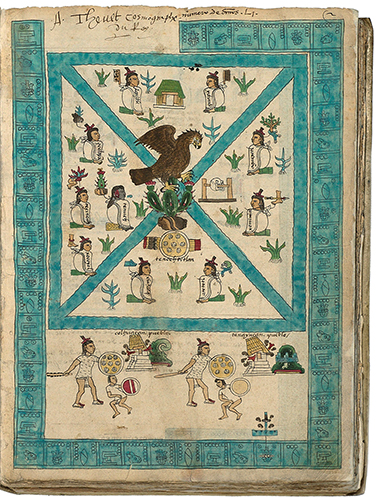
Frontispiece of the Codex Mendoza
Viceroyalty of New Spain (c. 1541–1542); The main scene depicts the founding of Tenochtitlán; Named after Antonio de Mendoza, viceroy of New Spain. The book uses glyphs created by Aztec artists that were later annotated in Spanish.
7
New cards
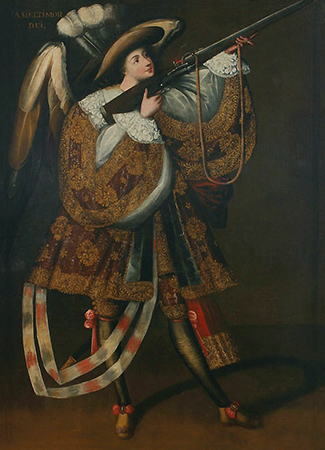
Angel with Arquebus (Asiel Timor Dei)
By Master of Calamarca (La Paz School)The angel is depicted with an arquebus (a form of rifle) instead of a traditional sword.one in a series of angel drummers, buglers, standard bearers, and holders of swords. The Master of Calamarca may have been José López de los Ríos
8
New cards
Screen with the Siege of Belgrade and a hunting scene
Circle of the González family (1697–1701)Only known example of an artwork that combines biombos and enconchados. Commissioned by José Sarmiento de Valladares. Displayed in Viceregal Palace in Mexico City.
9
New cards
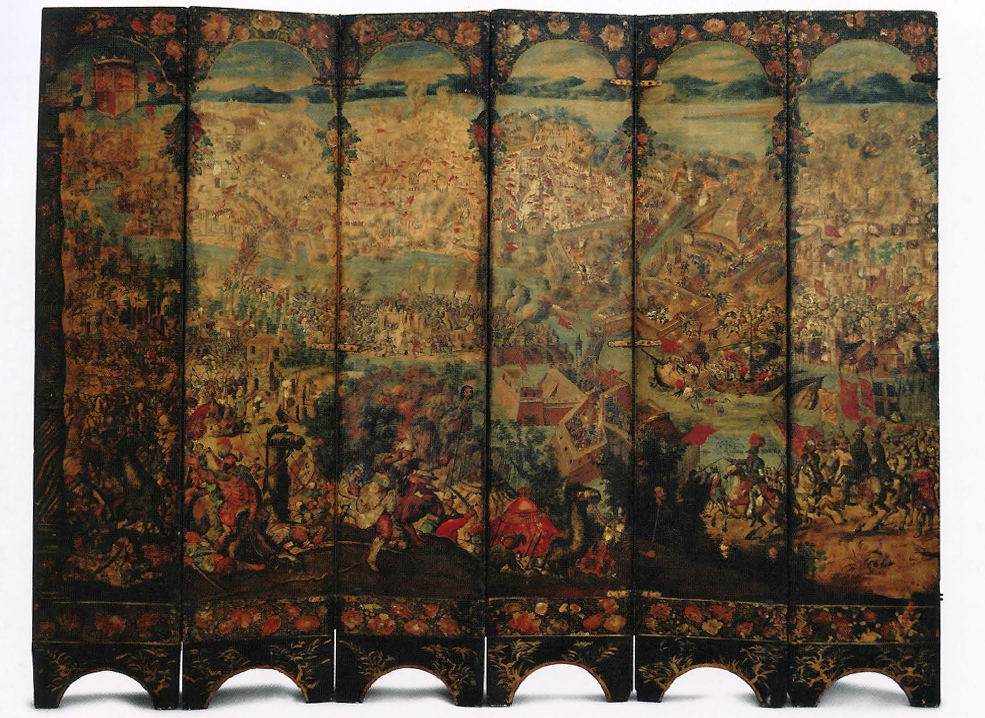
Screen with the Siege of Belgrade (Hunting Scene)
suited to an intimate space for small receptions. Dased on tapestry designs for the Medici. The design is derived from prints exported from Europe
10
New cards
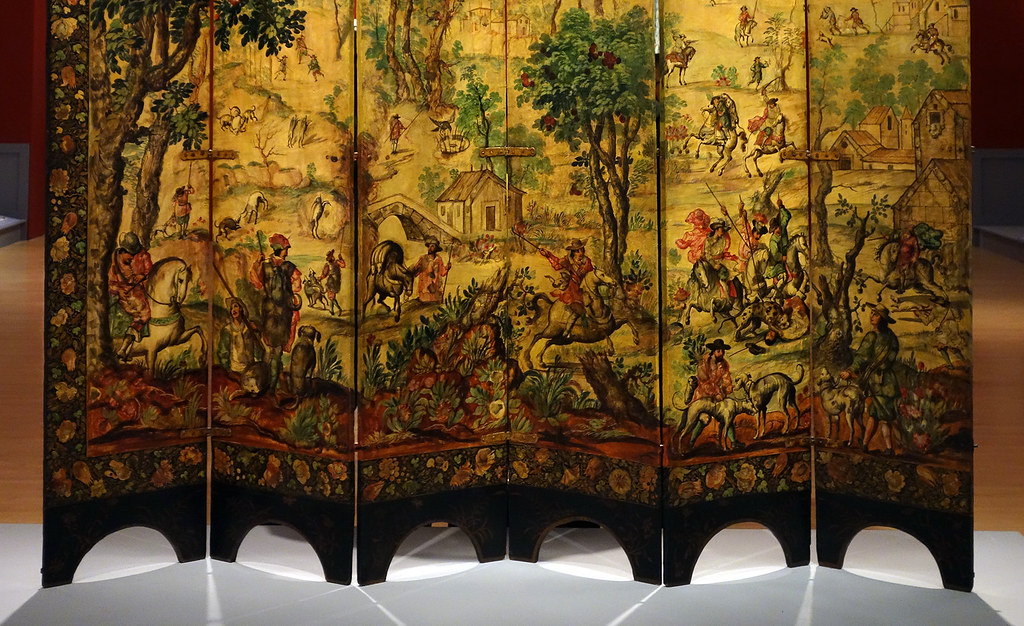
Screen with the Siege of Belgrade (War Scene)
more suited for a grander room of political importance. Depicts the contemporary event of the Great Turkish War; illustrates a scene of Hapsburg power.
11
New cards
Biombos
folding freestanding screens
12
New cards
Enconchados
shell-inlay paintings; tiny fragments of mother-of-pearl placed onto a wooden support and canvas and covered with a yellowish tint and thin glazes of paint
13
New cards
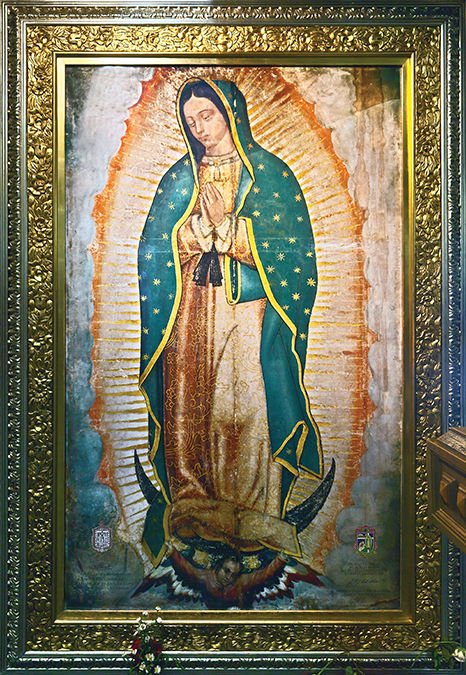
Virgin of Guadalupe
By Miguel González (1698)Based on original Virgin of Guadalupe. The painting describes an event in which Mary appeared to Native Americans on Tepeyac; Revelations 12:1
14
New cards
Tepeyac
a shrine sacred to a pre-Columbian goddess.
15
New cards
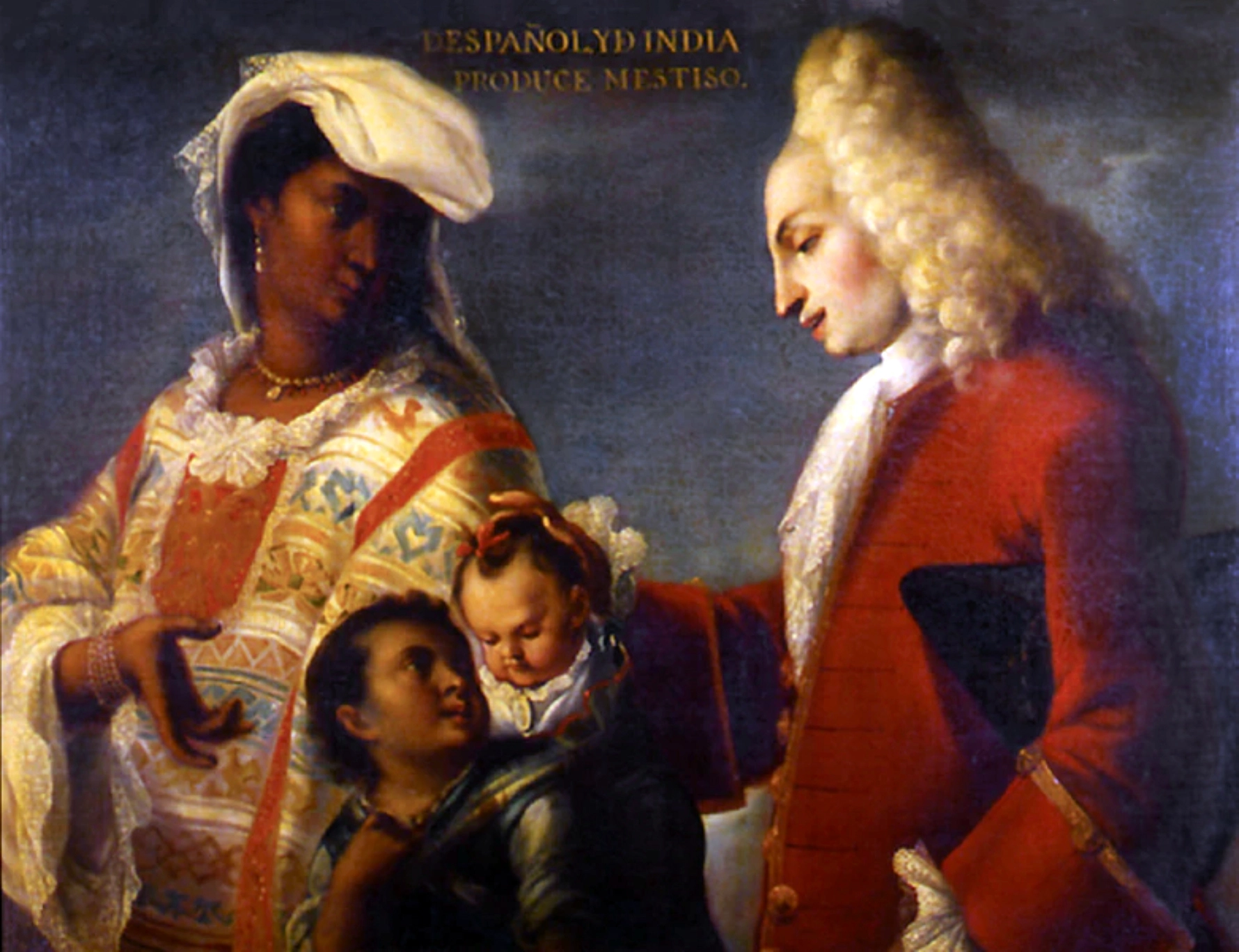
Spaniard and Indian Produce a Mestizo
Attributed to Juan Rodríguez Juárez (c. 1715)Spanish colonists commissioned these works to be sent abroad to show the caste system of the New World. Panel from the first known series of casta paintings
16
New cards
Casta paintings
paintings from New Spain showing people of mixed races
17
New cards
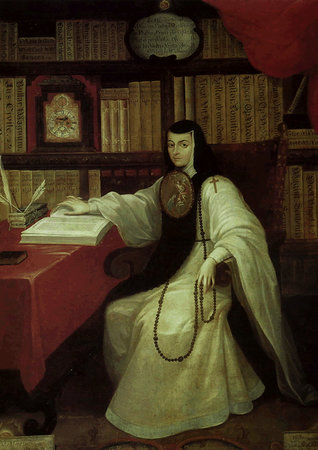
Portrait of Sor Juana Inés de la Cruz
By Miguel Cabrera (1750); Painting was done for her admirers 55 years after Sor Juana Inés’s death. Portrayed seated in her library surrounded by symbols of her faith and her learning.
18
New cards
Sor Juana Inés de la Cruz
She was a criollo woman who became a nun in 1669.a literary figure who wrote books that were widely read; she also wrote poetry and theatrical pieces, and maintained a great library.
19
New cards
Industrial Revolution
The \______ began in the latter half of the eighteenth century, and while it brought about improvements in quality of life, it was frequently countered by a new form of slavery to mechanized labor and harsh working conditions.
20
New cards
Enlightenment
A period of new intellectual development during which scientists and philosophers began to base their theories on logic and observation rather than on received wisdom and tradition.
21
New cards
Diderot
He organized and edited a massive 52-volume French encyclopedia in 1764
22
New cards
Johnson
He composed the first English dictionary singlehandedly in 1755
23
New cards
Rousseau
He discussed how a legitimate government was an expression of the general will in his 1762 Social Contract.
24
New cards
Johann Winckelmann
He publish The History of Ancient Art in 1764 when he discovered Pompeii
25
New cards
Academy
an institution whose main objectives include training artists in an academic tradition, ennobling the profession, and holding exhibitions
26
New cards
French Academy
They showcased selected works by its members in an annual or biannual event called the Salon, which greatly increased an artist's prestige and the value of their paintings.
27
New cards
Salon
a government-sponsored exhibition of artworks held in Paris in the eighteenth and nineteenth centuries
28
New cards
Grand Tour
in order to complete their education young Englishmen and Americans in the eighteenth century undertook a journey to Italy to absorb ancient and Renaissance sites
29
New cards
Fête galante
an eighteenth-century French style of painting that depicts the aristocracy walking through a forested landscape
30
New cards
Rococo art
This art is sensual and erotic, with playful scenes of love and romance that tease the imagination.
31
New cards
Rococo paintings
These paintings features curvy, delicate frames with limbs of figures spilling over the sides, blurring the line between painting and sculpture.
32
New cards
Pastel
a colored chalk that when mixed with other ingredients produces a medium that has a soft and delicate hue
33
New cards
Satirical Paintings
Eighteenth-Century English Painting was known mostly for \_____.
34
New cards
Neoclassical buildings
These were not simply imitations of ancient architecture but rather a smart adaptation of classical principles for modern living.
35
New cards
Monticello
It is a “little mountain” in Italian, sited on a hilltop in Virginia.
36
New cards
exemplum virtutis
Paintings like the retelling of the story of the Horatii were called \____, as they emphasized self-sacrifice for the greater good.
37
New cards
Bronze
It was the most expensive and highly prized sculptural medium before the Industrial Revolution.
38
New cards
13 colonies united in a cause
Washington leans on the Roman fasces: a group of rods bound together on the top and the bottom; the 13 rods symbolize the \_________.
39
New cards
wild frontier
Arrows between the rods likely refer to Native Americans or the idea of America as \_____.
40
New cards
Plow
\____ behind Washington symbolizes his plantation as well as the planting of a new world order.
41
New cards
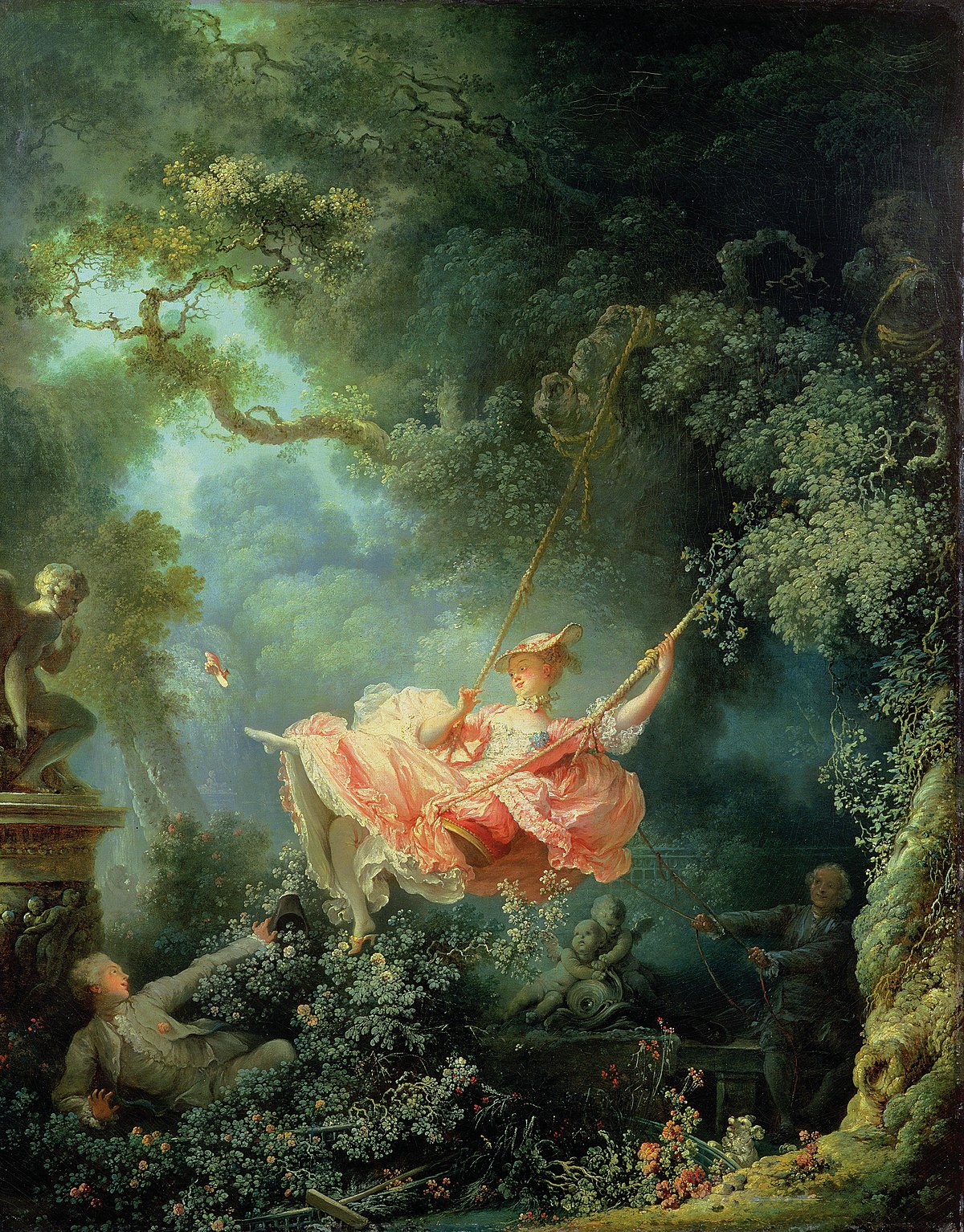
The Swing
By Jean-Honoré Fragonard (1767); Pastel palette; light brushwork; a dreamlike setting. Commissioned by an unnamed “gentleman of the Court.” Fragonard answers the libertine intentions of his patron by painting in the Rococo style.
42
New cards
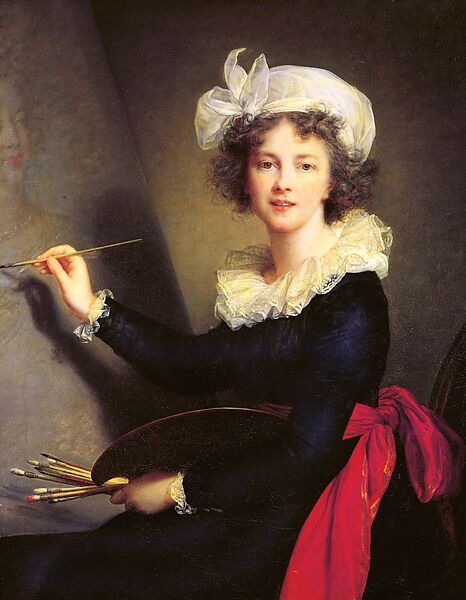
Elisabeth Louise Vigée Le Brun Self-Portrait
By Elisabeth Louise Vigée Le Brun (1790); Light Rococo touch in the coloring. The artist was 45 when this was painted, but she appears much younger. Subject in the painting looks admiringly upon the painter.
43
New cards
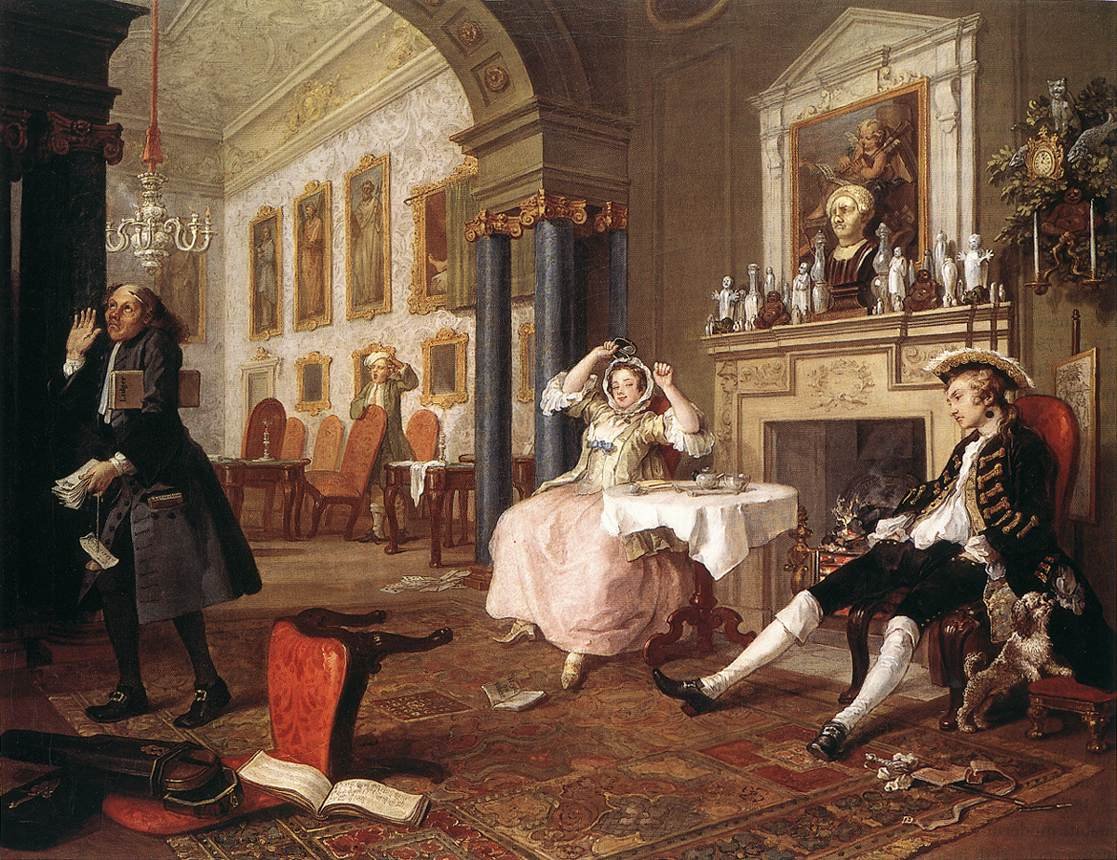
The Tête à Tête from Marriage à la Mode
By William Hogarth (c. 1743); Highly satiric paintings about a decadent English aristocracy and those who would have liked to buy their way into it. A series of six narrative paintings; later turned into a series of prints.
44
New cards
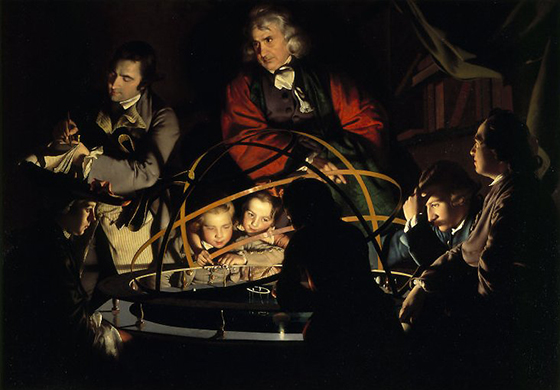
A Philosopher Giving a Lecture on the Orrery
By Joseph Wright of Derby (1763–1765); One of a series of candlelight pictures by Wright; inspired by Caravaggio’s use of tenebrism. Influenced by a provincial group of intellectuals called the Lunar Society. Each face in the painting is an aspect of the phases of the moon.
45
New cards
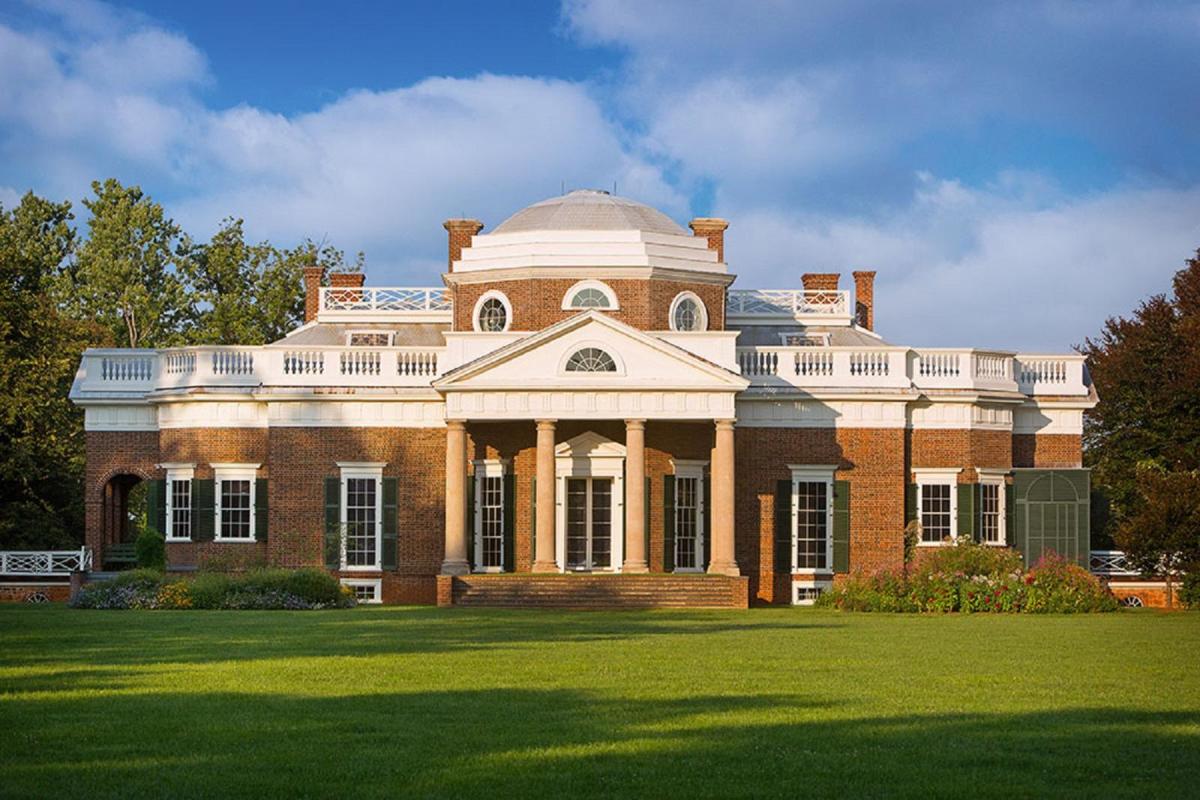
Monticello
By Thomas Jefferson (1768–1809); A brick building with stucco applied to the trim to give the effect of marble. Name itself is “little mountain” in Italian, sited on a hilltop in Virginia. Inspired by books by the Italian Renaissance architect Palladio and by Roman ruins Jefferson saw in France.
46
New cards
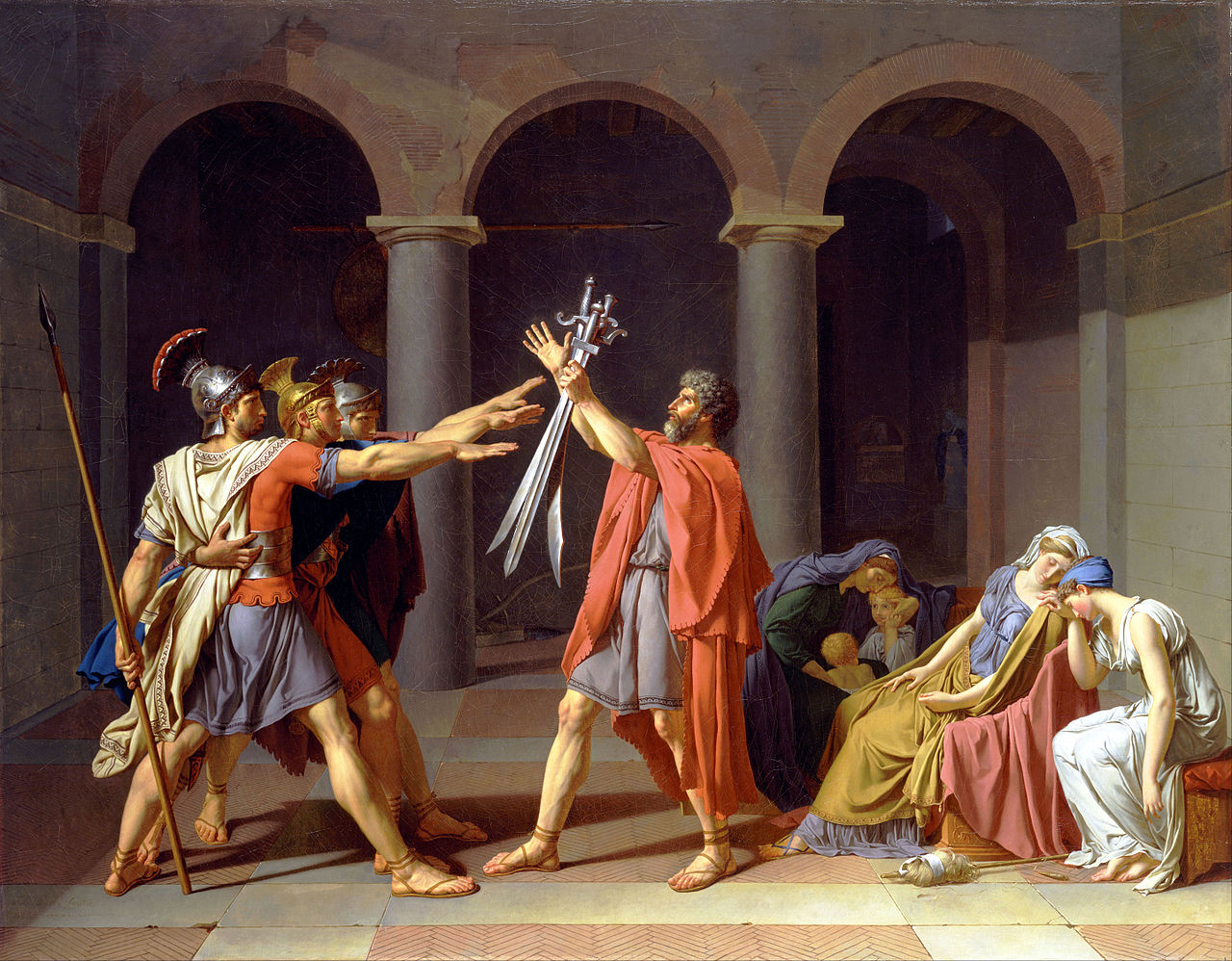
The Oath of the Horatii
By Jacques-Louis David (1784); Painted under royal patronage, Louis XVI. Story of three Roman brothers who do battle with three other brothers from the nearby city of Alba. Exemplum virtutis.
47
New cards
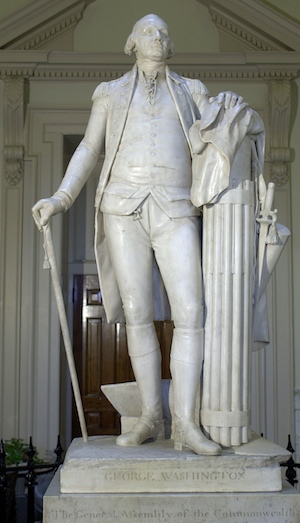
George Washington
By Jean-Antoine Houdon (1788–1792); Naturalistic details. Stance inspired by Polykleitos’s Doryphoros. Commissioned by the Virginia legislature. Meant to commemorate the central position for founding of American independence.
48
New cards
Enlightenment
Romantics reacted against \_____, advocating for trusting the heart over the head.
49
New cards
Romantic artists
They sought pleasure in refined things or audacious adventures, and were influenced by the extremes of human endeavor
50
New cards
Photography
It was the greatest artistic invention of the period, but was initially not seen as a form of art
51
New cards
Charles Barry
A classical architect; he accounts for the regularity of plan in the Palace of Westminster
52
New cards
Augustus Pugin
A Gothic architect, added Gothic architectural touches to the structure of the Palace of Westminster
53
New cards
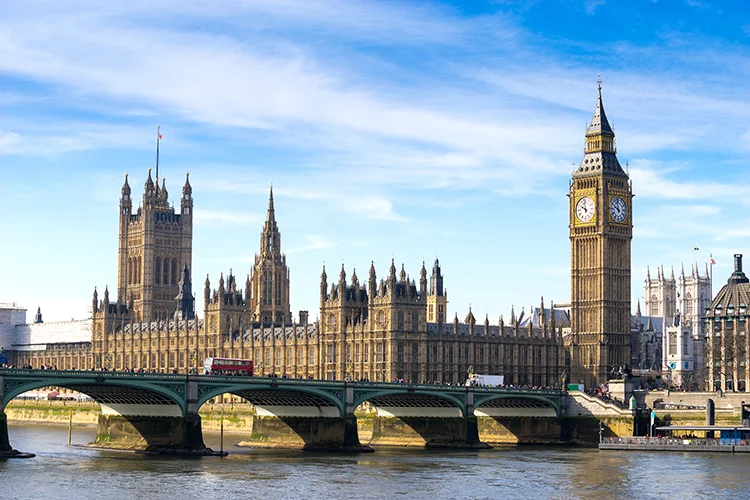
Palace of Westminster (Houses of Parliament)
By Charles Barry and Augustus Pugin (1840–1870); The building holds the two chambers of the United Kingdom’s government. Enormous structure of 1,100 rooms, 100 staircases, 2 miles of corridors. Building is a reaction against art as a mass-produced product of the Industrial Revolution
54
New cards
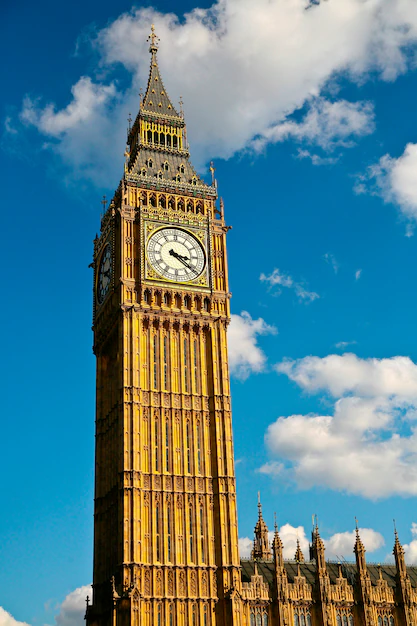
Big Ben
A clock tower; in a sense a village clock for all of England.
55
New cards
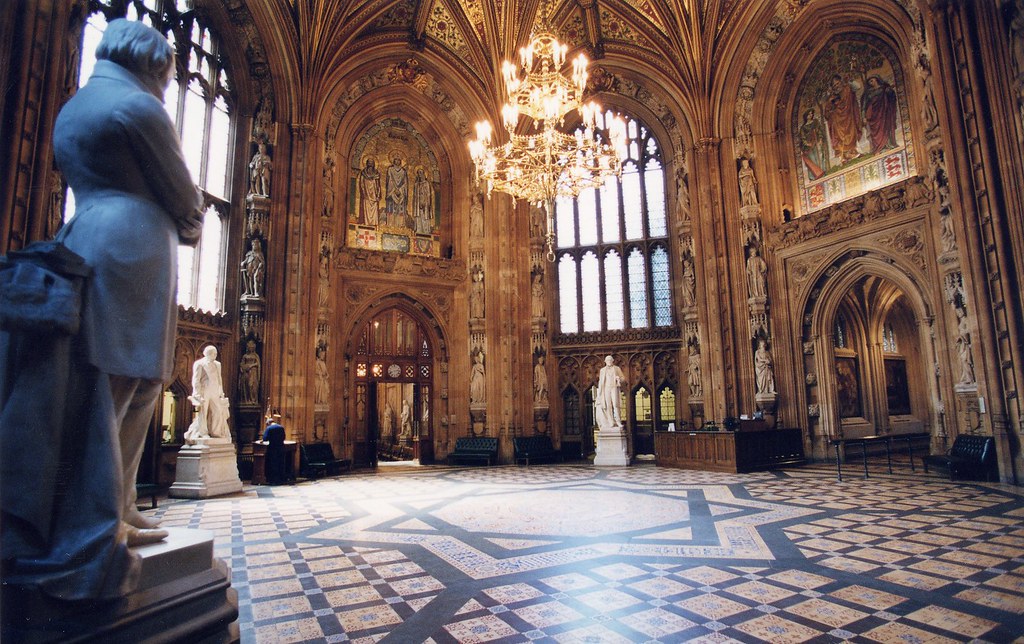
Central Lobby
Situated between the House of Commons and the House of Lords. Meant to be a space where constituents can meet their member of Parliament.
56
New cards
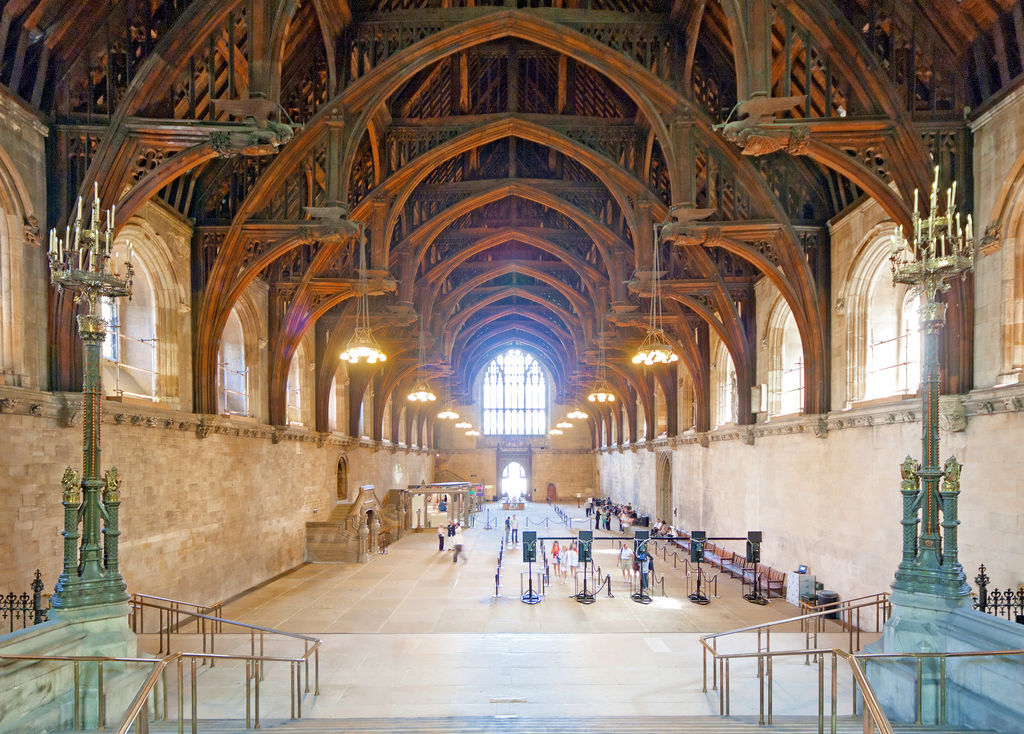
Westminster Hall
When the old Houses of Parliament burned to the ground, this hall survived and became the last vestige of the medieval parliament building. Perpendicular Gothic style of this hall inspired the design of the Houses of Parliament.
57
New cards
The sublime
any cathartic experience from the catastrophic to the intellectual that causes the viewer to marvel in awe, wonder, and passion
58
New cards
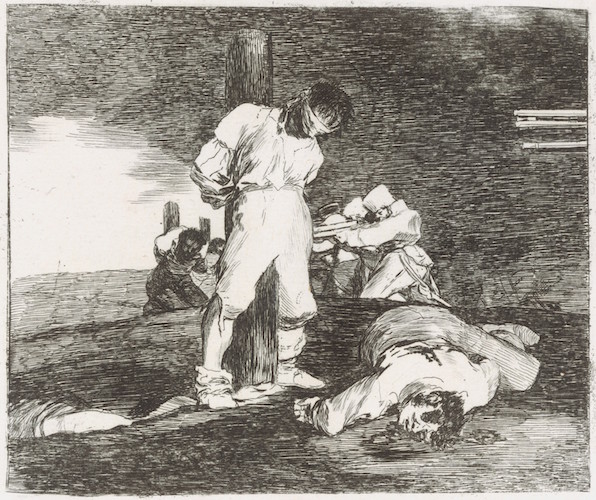
And There’s Nothing to Be Done (Y no hai remedio)
By Francisco De Goya (1863); from The Disasters of War (Les Desastres de la Guerra), Plate 15used a combination of etching and drypoint. Bitterly ironic and sardonic. Central figure is seen in a Christ-like pose.
59
New cards
Fatal Consequences of Spain’s Bloody War with Bonaparte and Other Emphatic Caprices
Original title of “And There’s Nothing to Be Done (Y no hai remedio)”
60
New cards
Caprice
usually a work of art that is an architectural fantasy; more broadly any work that has a fantasy element
61
New cards
Drypoint
an engraving technique in which a steel needle is used to incise lines in a metal plate. The rough burr at the sides of the incised lines yields a velvety black tone in the print
62
New cards
Odalisque
a woman slave in a harem
63
New cards
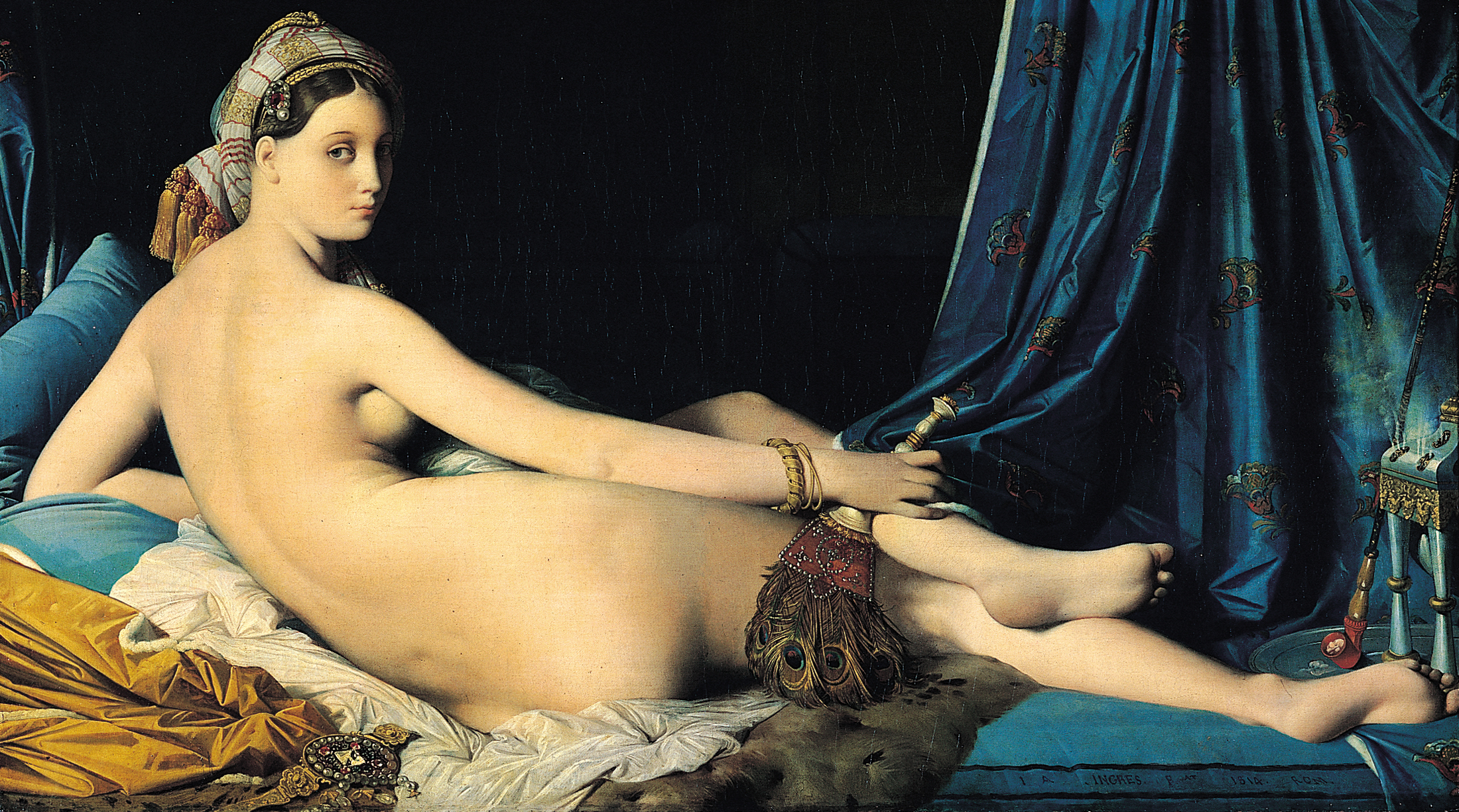
La Grande Odalisque
By Jean-Auguste-Dominique Ingres (1814); Commissioned by Caroline Murat, Napoleon’s sister, Queen of Naples.Raphael-like face.Not a traditional frontal nude.
64
New cards
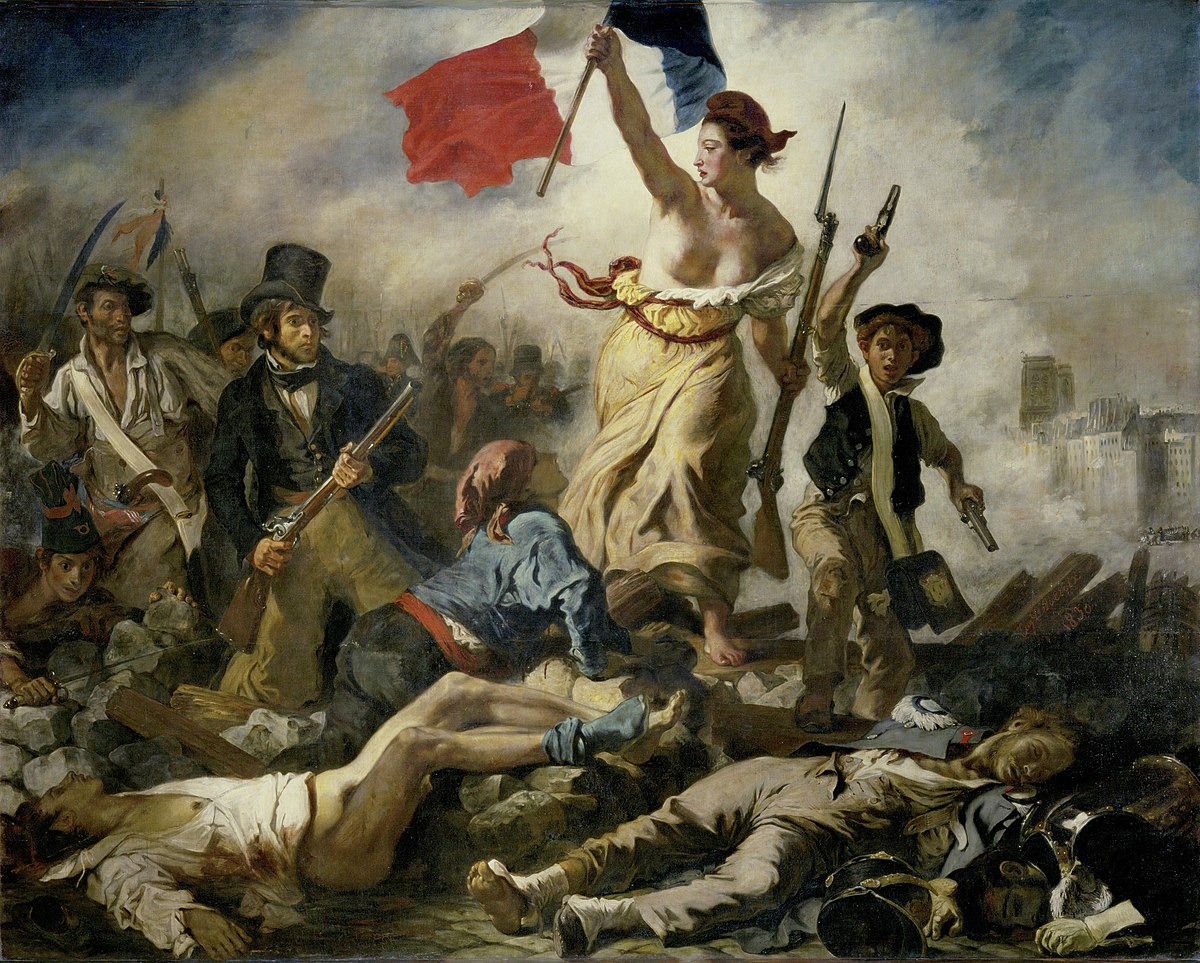
Liberty Leading the People
By Eugène Delacroix (1830); Red/white/blue (colors of the French flag) echo throughout the painting. The painting symbolically depicts the July Revolution of 1830; Exhibited at the Salon of 1831 and then acquired by the French state
65
New cards
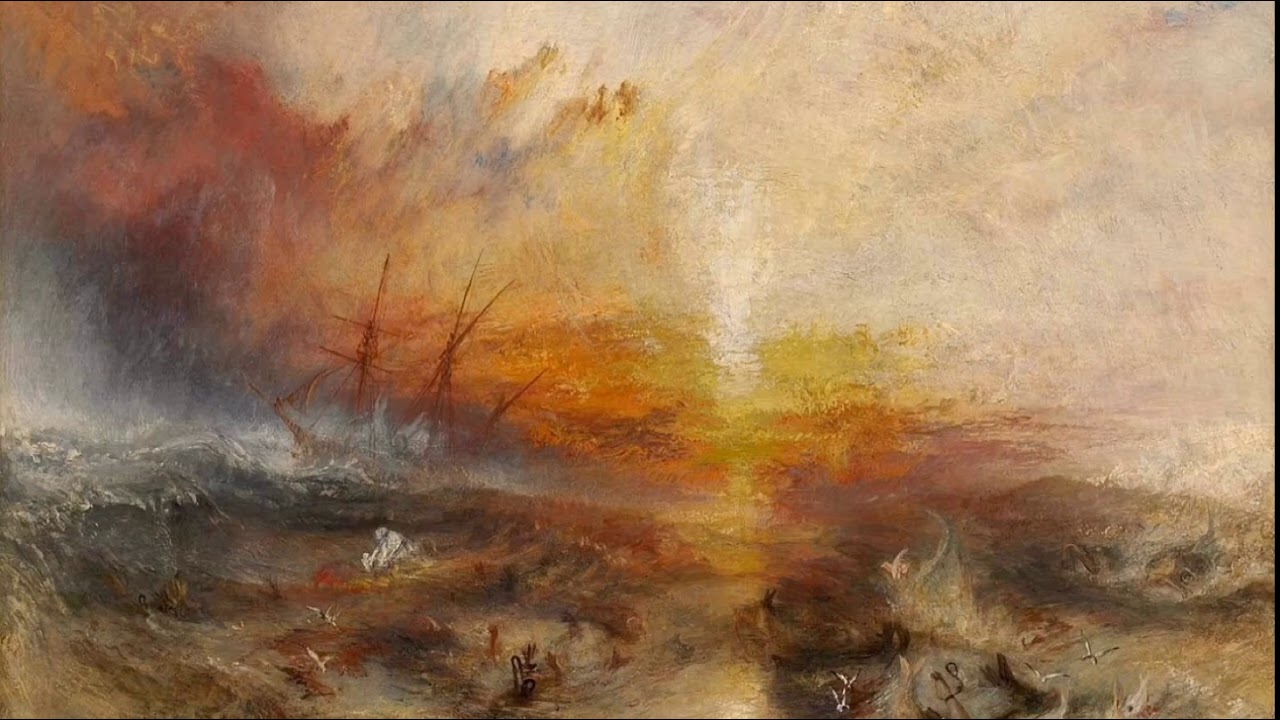
Slave Ship
By Joseph Mallord William Turner (1840); Based on a true story; slaves were insured against accidental drowning. Nature responds to the inhumanity of the slave trade.
66
New cards
Thomas Clarkson
Turner’s painting was inspired by an account of the scandal published in a book by \____, which had been reprinted in 1839.
67
New cards
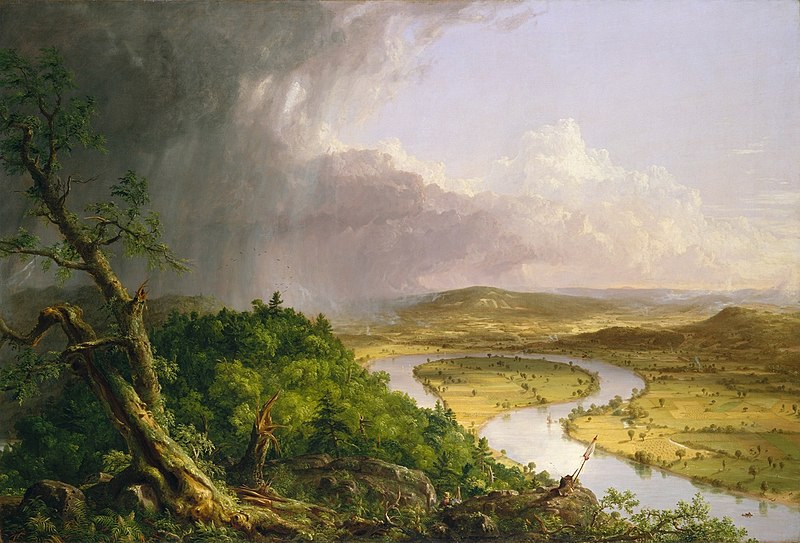
The Oxbow
By Thomas Cole (1836); The View from Mount Holyoke, Northampton, Massachusetts, after a Thunderstorm. Painted as reply to a British book that alleged that Americans had destroyed a wilderness with industry. Manifest Destiny.
68
New cards
Thomas Cole
the founder of the Hudson River School.
69
New cards
camera obscura
Experiments in photography go back to the seventeenth century, when artists used a device called a \____ to focus images in a box so that artists could render accurate copies of the scene before them.
70
New cards
Photosensitive paper
It was introduced that could replicate the silhouette of an object when exposed to light.
71
New cards
Photogram
an image made by placing objects on photosensitive paper and exposing them to light to produce a silhouette
72
New cards
Daguerreotype
a type of early photograph, developed by Louis Daguerre that is characterized by a shiny surface, meticulous finish, and clarity of detail. Daguerreotypes are unique photographs; they have no negative
73
New cards
Calotype
a type of early photograph, developed by William H. F. Talbot that is characterized by its grainy quality. It is considered the forefather of all photography because it produces both a positive and a negative image
74
New cards

Still Life in Studio
By Louis-Jacques-Mande Daguerre (1837); Long exposure times required. Produced on a metallic surface; photos have a glossy finish.
75
New cards
Japonisme
an attraction for Japanese art and artifacts that were imported into Europe in the late nineteenth century
76
New cards
Lithography
a printmaking technique that uses a flat stone surface as a base. The artist draws an image with a special crayon that attracts ink. Paper, which absorbs the ink, is applied to the surface and a print emerges
77
New cards
Caricature
a drawing that uses distortion or exaggeration of someone’s physical features or apparel in order to make that person look foolish
78
New cards
Modernism
a movement begun in the late nineteenth century in which artists embraced the current at the expense of the traditional in both subject matter and in media. Modernist artists often seek to question the very nature of art itself
79
New cards
Plein-air
painting in the outdoors to directly capture the effects of light and atmosphere on a given object
80
New cards
Positivism
a theory that expresses that all knowledge must come from proven ideas based on science or scientific theory; a philosophy promoted by French philosopher Auguste Comte (1798–1857)
81
New cards
Skeleton
the supporting interior framework of a building
82
New cards
Zoopraxiscope
a device that projects sequences of photographs to give the illusion of movement
83
New cards
Avant-garde
an innovative group of artists who generally reject traditional approaches in favor of a more experimental technique
84
New cards
Drypoint
an engraving technique in which a steel needle is used to incise lines in a metal plate. The rough burr at the sides of the incised lines yields a velvety black tone in the print
85
New cards
Aquatint
a kind of print that achieves a watercolor effect by using acids that dissolve onto a copper plate
86
New cards
Realist painters
They believe in depicting things that can be experienced with the five senses.
87
New cards
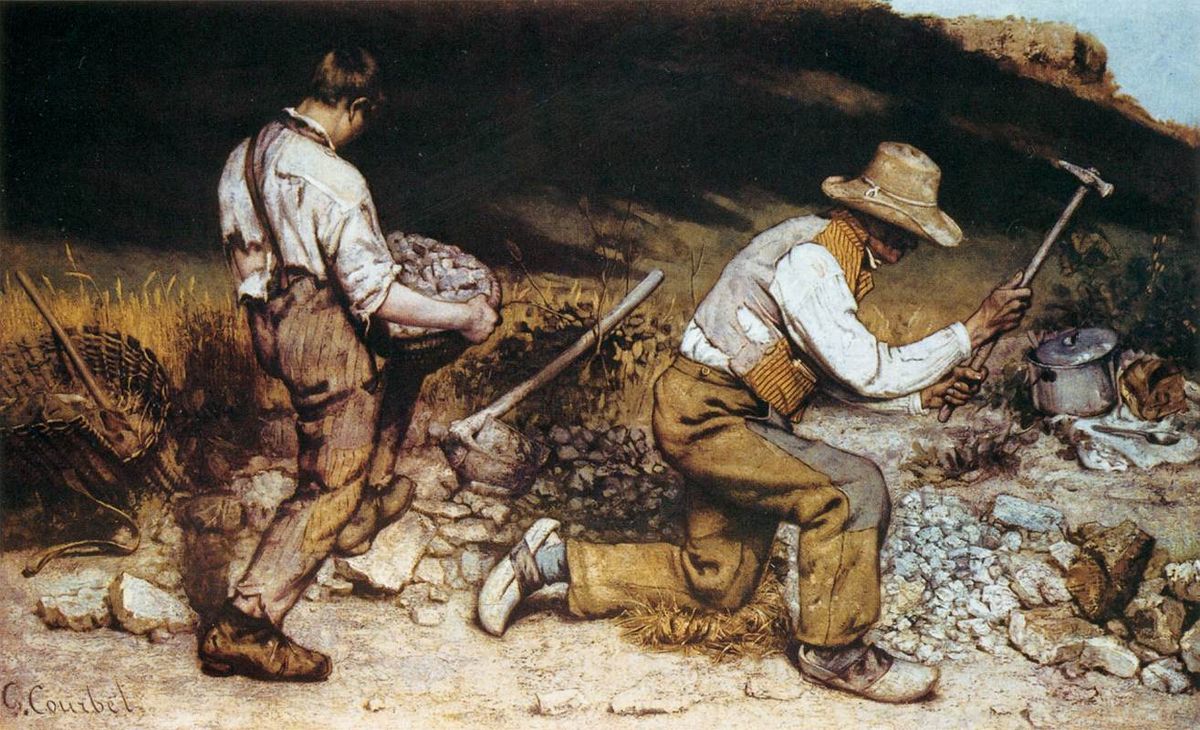
The Stone Breakers
By Gustave Courbet (1849); Browns and ochres are dominant hues reflecting the drudgery of peasant life. Reaction to labor unrest of 1848, which demanded better working conditions.
88
New cards
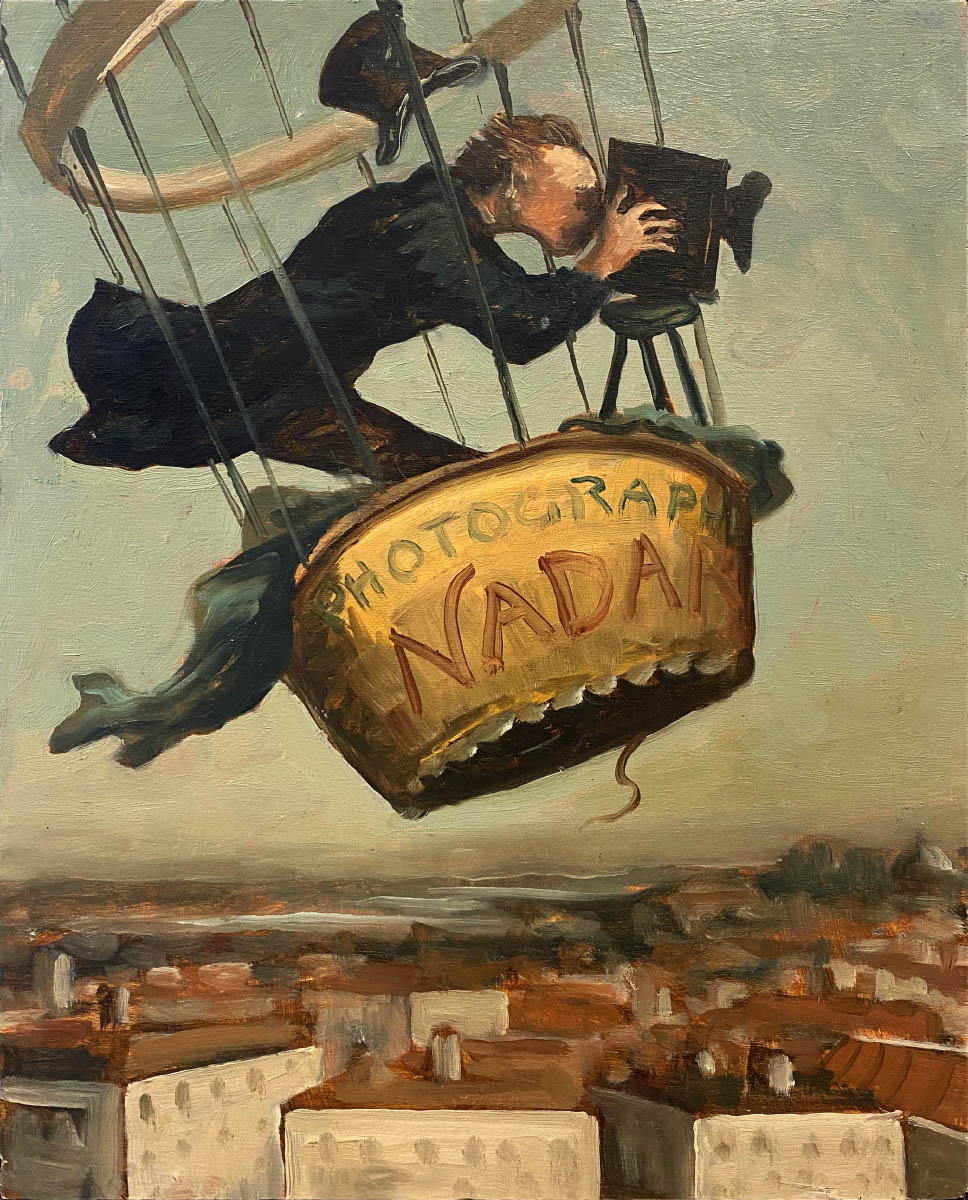
Nadar Raising Photography to the Height of Art
By Honoré Daumier (1862); Originally appeared in a journal, Le Boulevard, as a mass-produced lithograph. The print satirizes the claims that photography can be a “high art;” irony implied in title.
89
New cards
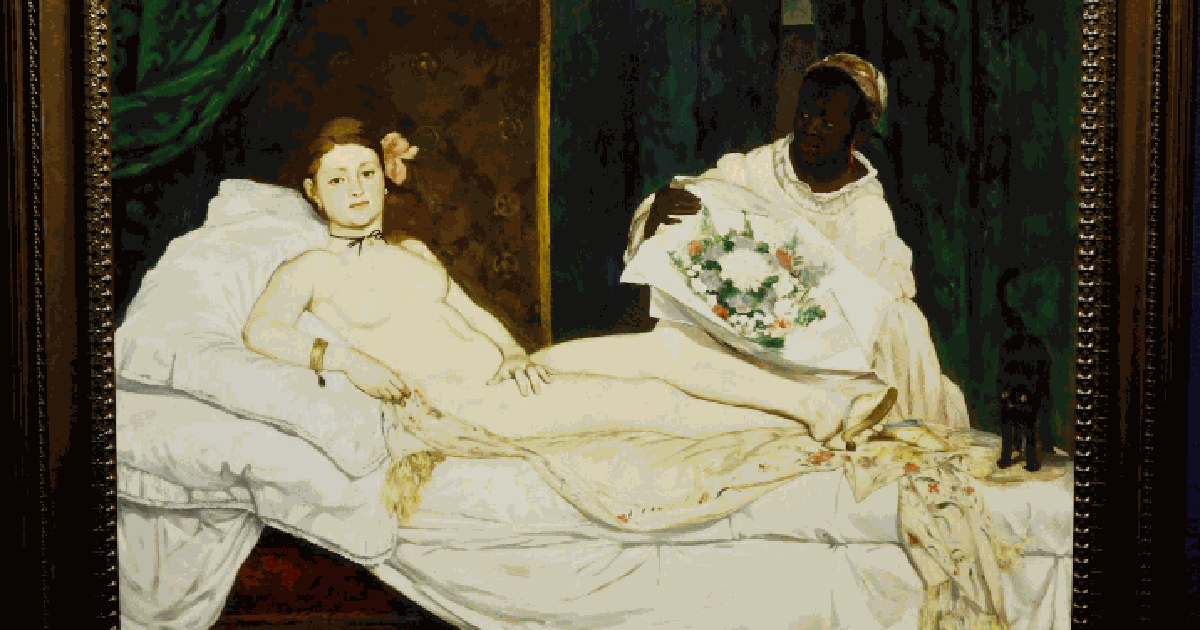
Olympia
By Édouard Manet (1863); The maid delivers flowers from an admirer; a cat responds to our entry into the room. Manet creates a dialogue between the nude prostitute and the clothed black servant
90
New cards
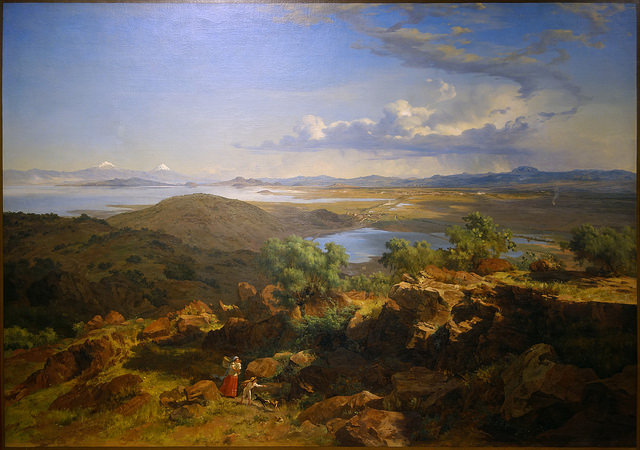
The Valley of Mexico from the Hillside of Santa Isabel (El Valle de México desde el Cerro de Santa Isabel)
By Jose María Velasco (1882); The painting depicts Tepeyac and offers a sweeping view of the Valley
91
New cards
Jose María Velasco
He rejected the realist landscapes of Courbet; he preferred the romantic landscapes of Turner.
92
New cards
Leland Stanford
The Horse in Motion is hired by \________ to settle a bet to see if a horse’s four hooves could be off the ground at the same time during a natural gallop.
93
New cards

The Horse in Motion
By Eadweard Muybridge (1878); Albumen Print; Zoopraxiscope is used; very fast shutter speeds, nearly 1/2000th of a second. One photograph with sixteen separate images of a horse galloping.
94
New cards
avant-garde
Impressionism is a modernist movement led by \____ artists.
95
New cards
bourgeois
Impressionism was originally anti-academic and anti-bourgeois, but it is now seen as the hallmark of \____ taste.
96
New cards
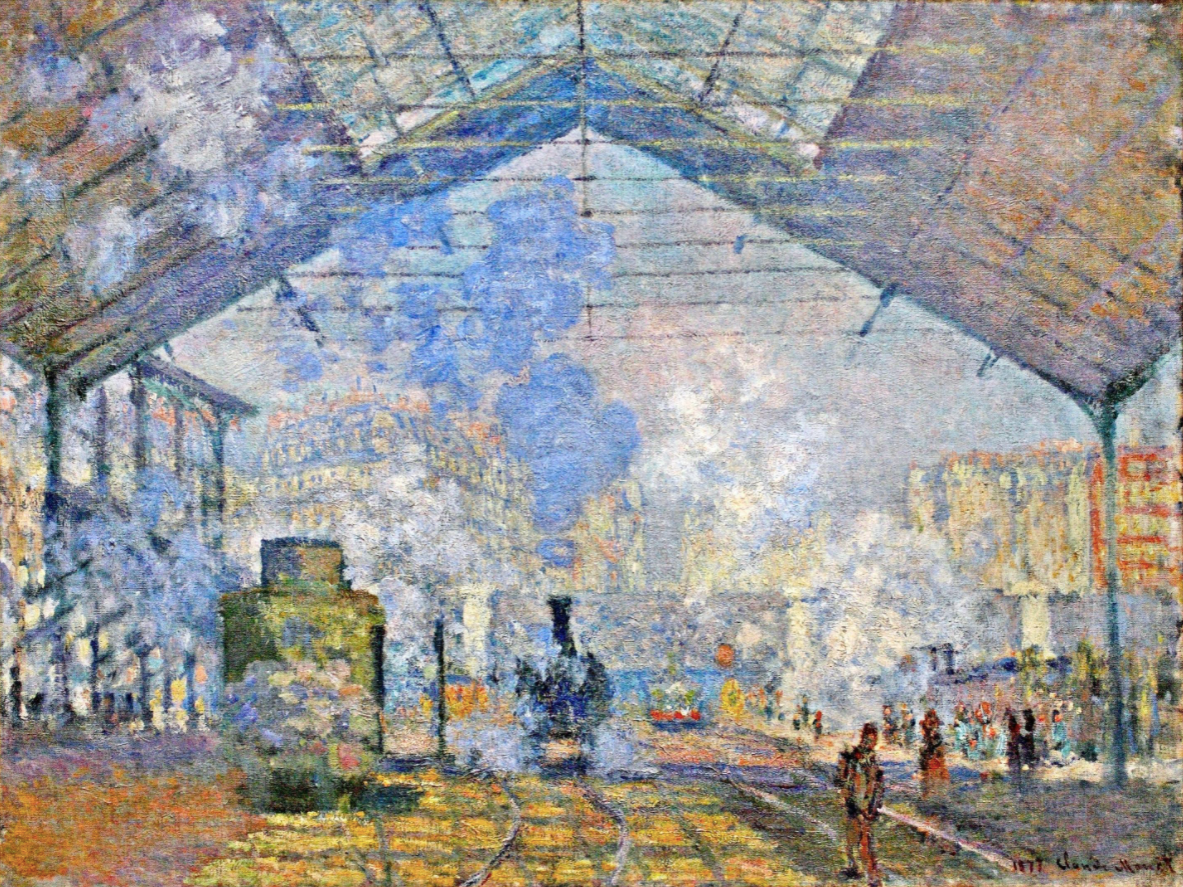
The Saint-Lazare Station
By Claude Monet (1877); The painting depicts the interior of a train station in Paris. Shows modern life in Paris with great industrial iron output
97
New cards
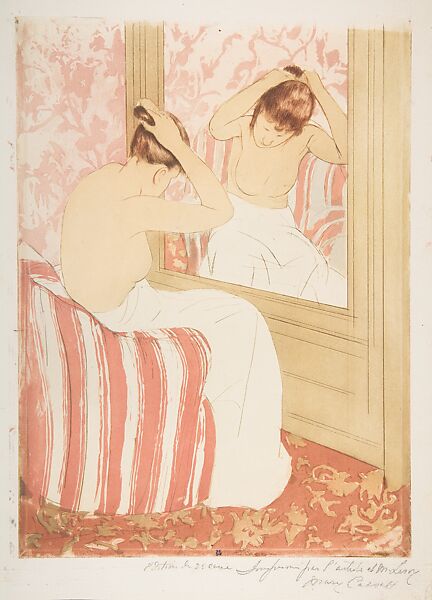
The Coiffure
By Mary Cassatt (1890–1891); The work contains contrasting sensuous curves of the female figure with straight lines of the furniture and wall. Japanese influence
98
New cards
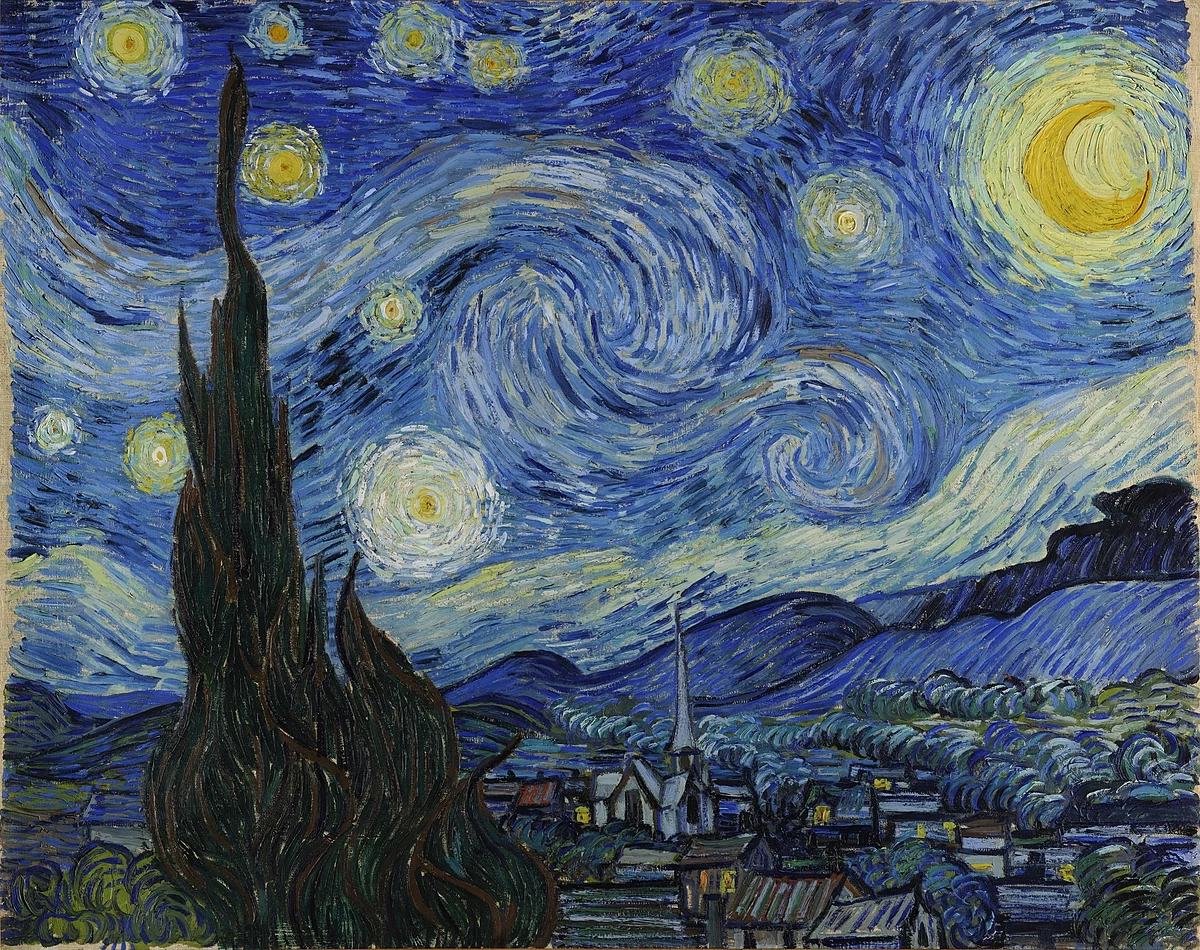
Starry Night
By Vincent van Gogh (1889); Heavy application of paint called impasto. Dutch church, crescent moon, Mediterranean cypress tree.
99
New cards
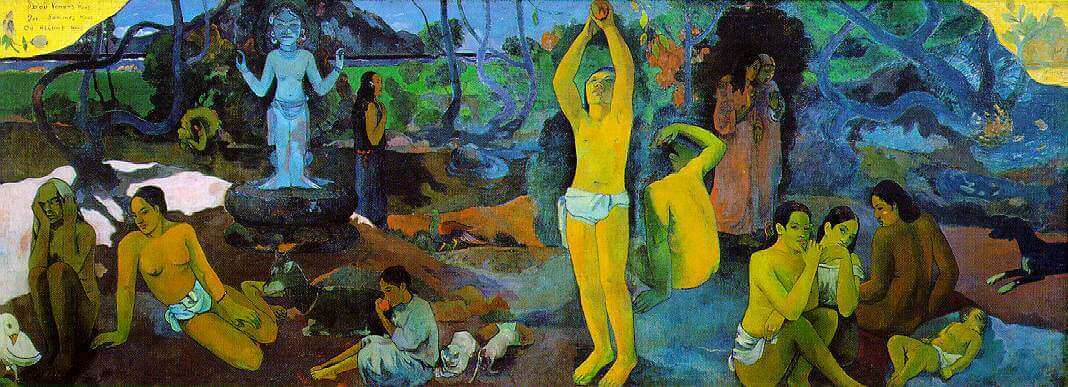
Where Do We Come From? What Are We? Where Are We Going?
By Paul Gauguin (1897–1898); Gauguin thought the painting was a summation of his artistic and personal expression. The figures in foreground represent Tahiti and an Eden-like paradise; background figures are anguished, darkened figures.
100
New cards
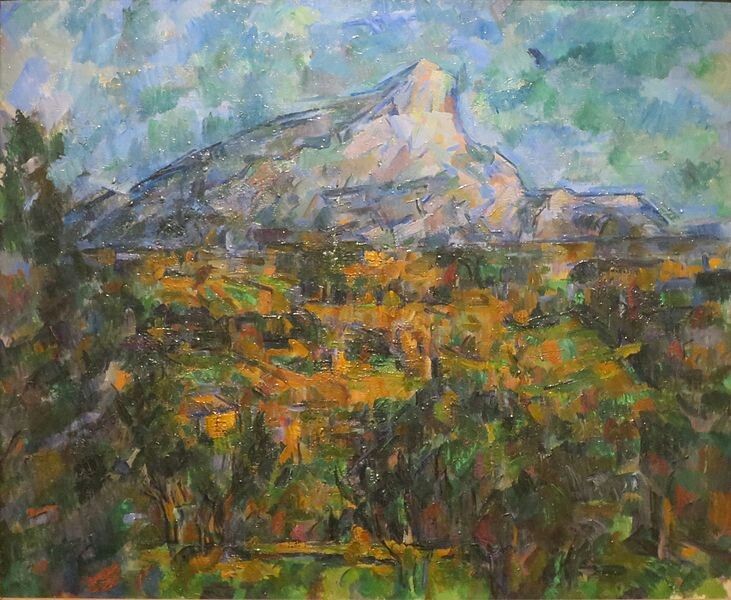
Mont Saint-Victoire
By Paul Gauguin (1902–1904); Used perspective through juxtaposing forward warm colors with receding cool colors. One of 11 canvases of this view painted near his studio in Aix in the south of France; the series dominates Cézanne’s mature period.